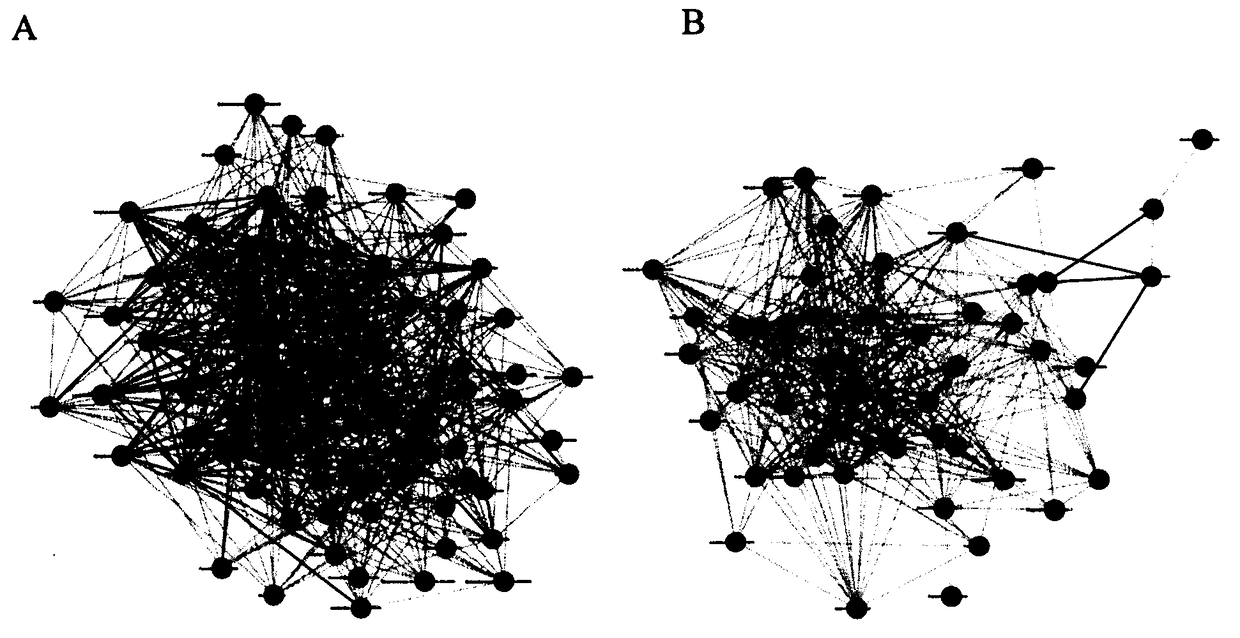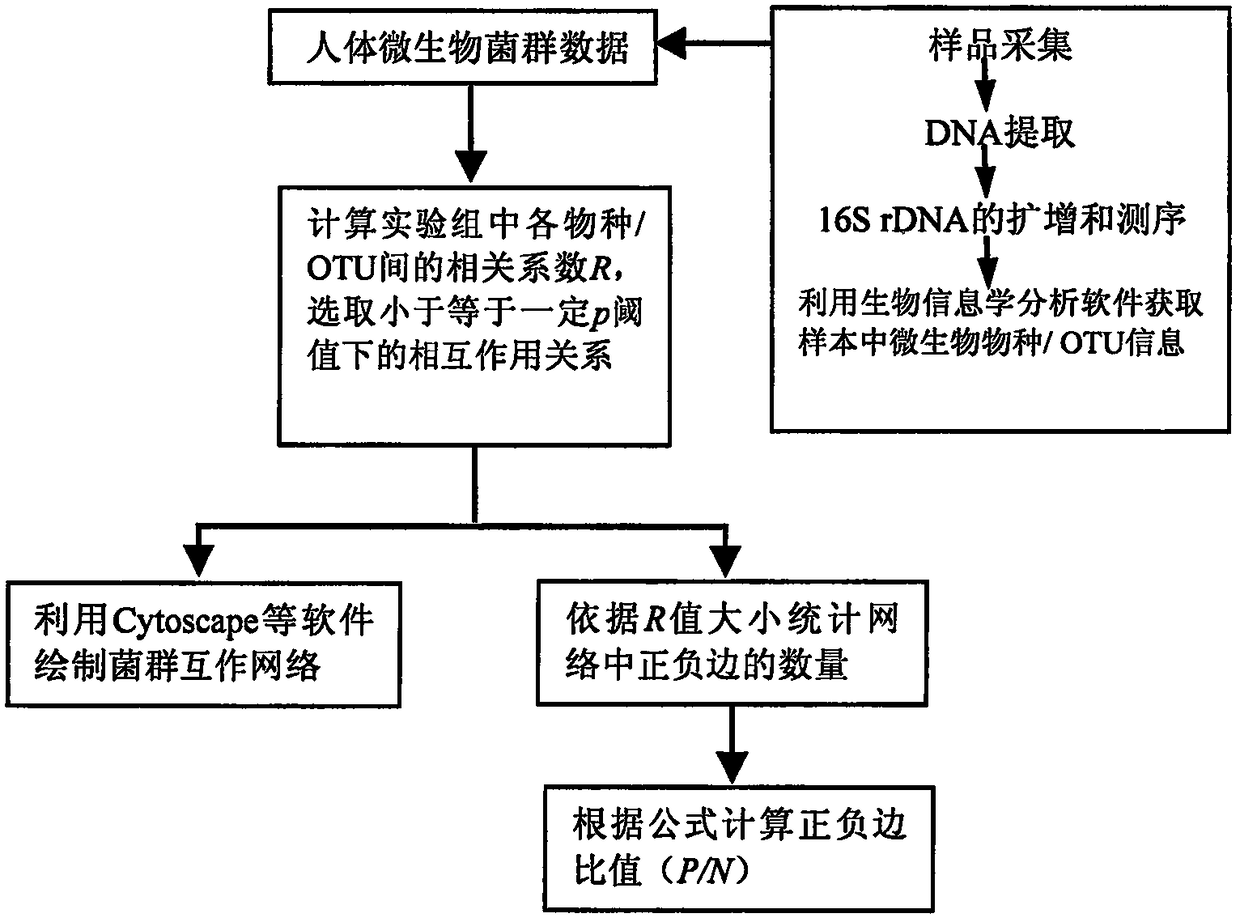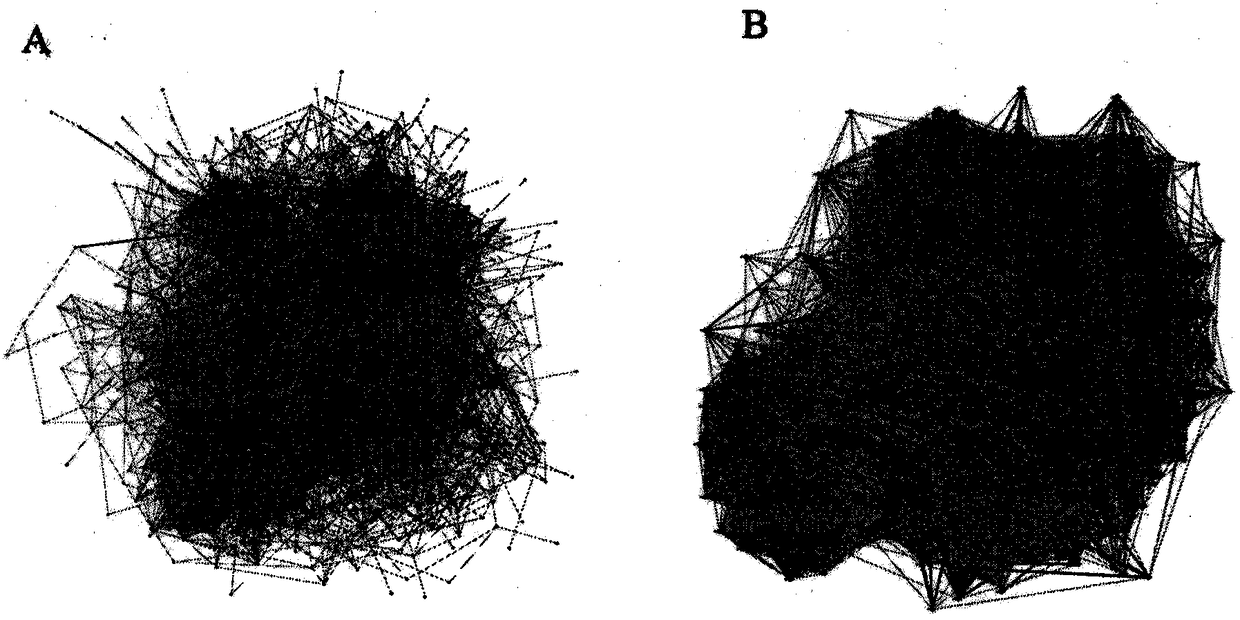Application of ratio of positive effects to negative effects in human microbial interaction network in assessment of human health and disease diagnosis
A technology of interactive network and positive and negative effects, applied in the field of computational biology and medical health, can solve the problems that the diversity index cannot be widely used in various diseases, and the research on microbial flora has not been widely used, so as to improve the accuracy of detection The effect of degree and sensitivity
- Summary
- Abstract
- Description
- Claims
- Application Information
AI Technical Summary
Problems solved by technology
Method used
Image
Examples
Embodiment 1
[0019] Example 1: Comparing the positive and negative relationship ratios in the intestinal flora interaction network of HIV-positive patients and negative controls
[0020] The calculation process of the present invention is as accompanying drawing figure 1 shown
[0021] Data Sources:
[0022] In 2013, McHardy et al. published data on the intestinal microbiota of HIV-positive and negative individuals. The samples were collected from the intestinal mucosa of 20 HIV patients who had not received antiretroviral treatment and 20 healthy individuals. After the DNA is extracted from the sample, the 16S rDNA fragment is amplified using a general-purpose method. After sequencing using the Illumina HiSeq 2000 sequencing platform, an OTU table clustered on the basis of 97% similarity was obtained through bioinformatics analysis, where each OTU represents a species, and the sequencing content of the OTU in each sample represents the OTU in the Species abundance within this sample. ...
Embodiment 2
[0028] Example 2: Comparing the ratio of positive and negative relationships in the oral flora interaction network of smokers and non-smokers
[0029] The calculation process of the present invention is as accompanying drawing figure 1 shown
[0030] Data Sources:
[0031] Lazarevic et al published oral saliva microbial flora data of smokers and non-smokers in 2010, and collected oral saliva samples of two non-smoking individuals and three smoking individuals at three time points within 29 days. After DNA extraction, the 16S rDNA fragment was amplified with universal primers, the sequence was sequenced by the Genome Sequencer FLX system, and then the OTU table clustered on the basis of 97% similarity was obtained through bioinformatics analysis, in which each OTU represented Represents a species, and the sequencing content of the OTU in each sample represents the species abundance of the OTU in the sample.
[0032] Construction of oral flora interaction network:
[0033] B...
Embodiment 3
[0038] Example 3: Comparing the ratio of positive and negative edges in the skin flora interaction network of atopic dermatitis patients and healthy people
[0039] The calculation process of the present invention is as accompanying drawing figure 1 shown
[0040] Data Sources:
[0041] The skin microflora data of patients with atopic dermatitis (AD) and healthy people published by Kong et al. in 2012, samples were collected from 12 AD patients aged 2-15 years and 11 healthy people of skin samples. After the DNA was extracted from the sample, the 16S rDNA fragment was amplified by general purpose. After sequencing, the OTU table clustered on the basis of 97% similarity was obtained through bioinformatics analysis. Each OTU represented a species, and each The sequence content of the OTU in a sample represents the species abundance of the OTU in the sample.
[0042] Construction of skin flora interaction network:
[0043] Based on the species abundance expressed by OTU, the...
PUM
 Login to View More
Login to View More Abstract
Description
Claims
Application Information
 Login to View More
Login to View More - R&D
- Intellectual Property
- Life Sciences
- Materials
- Tech Scout
- Unparalleled Data Quality
- Higher Quality Content
- 60% Fewer Hallucinations
Browse by: Latest US Patents, China's latest patents, Technical Efficacy Thesaurus, Application Domain, Technology Topic, Popular Technical Reports.
© 2025 PatSnap. All rights reserved.Legal|Privacy policy|Modern Slavery Act Transparency Statement|Sitemap|About US| Contact US: help@patsnap.com



